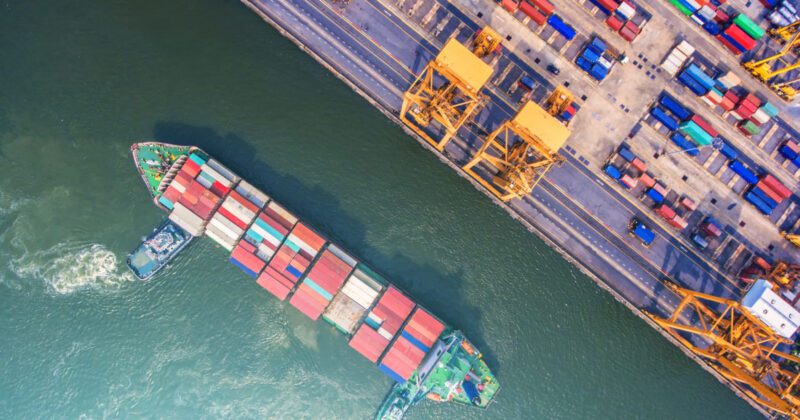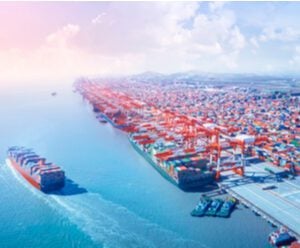供应链连连中断,压力攀升

目前,经济学家和分析师基本同意,全球经济正在放缓。同样地,其中大部分人预计,未来几个季度内,一些国家的经济几乎肯定会陷入衰退。
过去两年,受新冠疫情的影响,海运集装箱市场运力失衡,而今年港口运转逐渐恢复常态。不过事实证明,对于海运利益相关者而言,今年夏季的北半球海运仍充满了挑战,无论他们的计划做得多么周密详细,各种新的、重复发生的供应链中断问题都会把他们的计划打乱。
“为保证客户业务平稳运行,货运代理商习惯于进行危机管理,寻求各种解决方案。”DHL Global Forwarding亚太区首席执行官Kelvin Leung表示,“新冠疫情带来了更多的挑战,今年夏天也不例外。”
Leung还补充道:“虽然目前的经济迹象不容乐观,但是我们仍能在货运渠道捕捉到一些好的迹象,即使货运量可能会从新冠疫情时期的峰值回落到平稳状态,再进一步恢复到历史正常水平。”
欧洲供应链受炎炎夏日“烤”验
今年夏天,热浪肆虐,欧洲大陆主要河流干涸,水位大幅下降。到8月中旬,在欧洲最长的河流——多瑙河上,驳船几乎无法通航。与此同时,由于水位降至历史低位,重要的工业大动脉——莱茵河的某些河段也几乎无法输送货物。
欧洲各港口也发生了罢工事件。德国工会和德国港口运营商之间仍在谈判,而英国利物浦和费利克斯托港口的工人也宣布将在8月举行大规模罢工。
对于本已捉襟见肘的欧洲铁路和公路网而言,驳船无法通行无异于雪上加霜。
受疫情的持续影响,中国出口增速放缓
受疫情的持续影响,中国7月份的工厂活动意外减少。根据中国国家统计局的数据,今年官方制造业采购经理人指数(PMI)从6月份的50.2%降至7月份的49.0%,新订单和产量均出现下滑。部分原因是,深圳和天津的主要产区爆发了新冠疫情,随之而来的防疫封控措施打断了制造业的生产计划。
而且在过去几个星期,因为中国在台湾海峡进行实弹军事演习,全球航运也受到了影响。
美国港口运营状况改善, 但拥堵问题仍未解决
进入2022年,美国西海岸港口的拥堵状况已经得到明显缓解,尤其是拥堵情况曾经最为严重的两个北美主要门户:洛杉矶港和长滩港。
即便如此,美国港口的整体拥堵情况与年初相比并没有太大改善,因为拥堵的压力已转移到墨西哥湾和东海岸的港口。7月下旬,在美国各港口等待的船只数量超过150艘,其中等待的船只数量最多的港口分别是佐治亚州萨凡纳港、纽约-新泽西港、休斯顿港。由于大多数发货人为了避免货物在西海岸港口遭到拖延,纷纷改变原来的运输方案,导致今年美东港口的进口量创历史新高,造成了严重的拥堵问题。
航运公司的船期可靠性急剧下滑。根据Sea-Intelligence的数据,6月份东海岸服务的船期可靠性仅为18.7%,而迟到船舶的平均延误时间为9天。
经济形势恶化
产品价格上涨,经济增长速度放缓,经济预期自然不会乐观。7月,国际货币基金组织(IMF)将2022年全球GDP增长预期下调至3.2%,比今年4月发布的预期又下降了0.4个百分点。
国际货币基金组织还将2023年全球经济增长预期调整至2.9%,比之前的预测下降了0.7个百分点。
在货运需求方面,国际货币基金组织进一步大幅下调对发达国家(许多集装箱产品的大买家)的预期。美国今年的经济增长预期被下调至2.3%,而4月份发布的预期为3.7%,美国2023年的增长预期也从此前的2.3%下调为仅1.0%。
德国作为欧洲最大的经济体,其2023年GDP增长预期被大幅下调1.9个百分点,预计增速为0.8%。国际货币基金组织还下调了整个欧洲2023年的经济增长预期,减少1.1个百分点,预计增速为1.2%。
受上述预期下调影响,今年全球商品和服务贸易预期增长4.1%,比国际货币基金组织4月份发布的预期降低了0.9个百分点。
集装箱运费下跌
由于宏观经济遭遇强劲逆风,许多主要贸易经济体预计将出现经济衰退,因此最近几周中国出口往程航线上的集装箱即期运费持续下跌。不过,虽然今年运费连续回落,但是价格依然高企。许多航线上的运费仍比疫情前的水平高出三到四倍。
虽然价格利好仍然存在,为阻止“跌跌不休”的运费,各运输企业已经开始取消许多船运航班。
DHL Global Forwarding海运业务全球负责人Dominique von Orelli表示,各国央行控制通货膨胀和限制任何重大经济萎缩的速度,在很大程度上会影响海运价格的波动。
“显然,为了维持亚洲到欧美的主要航线以及其他贸易航线的集装箱舱位供需平衡,运输企业会继续取消船运航班。”他还补充道,“也就是说,即使经济的发展如预期的那般不乐观,集装箱市场仍可能相对紧张。目前,我们正在为所有可能发生的事情做准备,同时敦促我们的客户做好同样的准备。”











 简体中文
简体中文